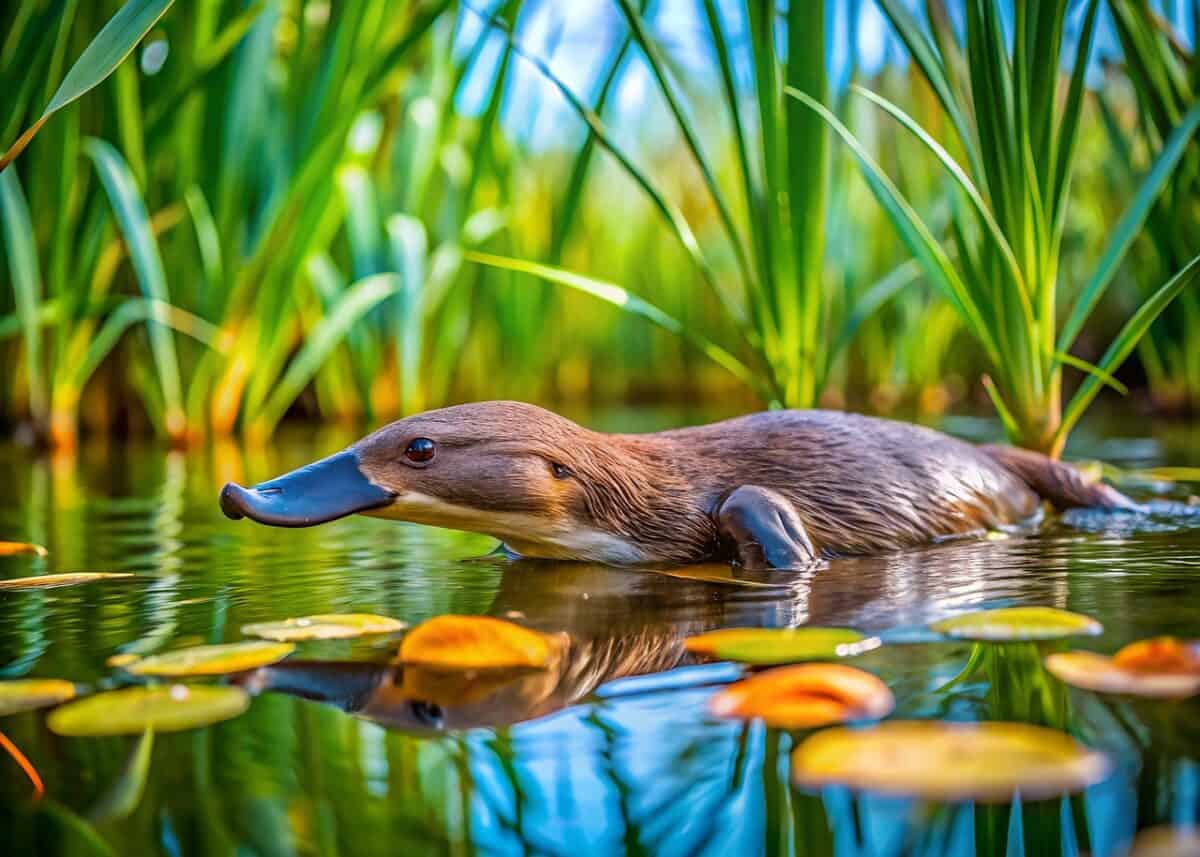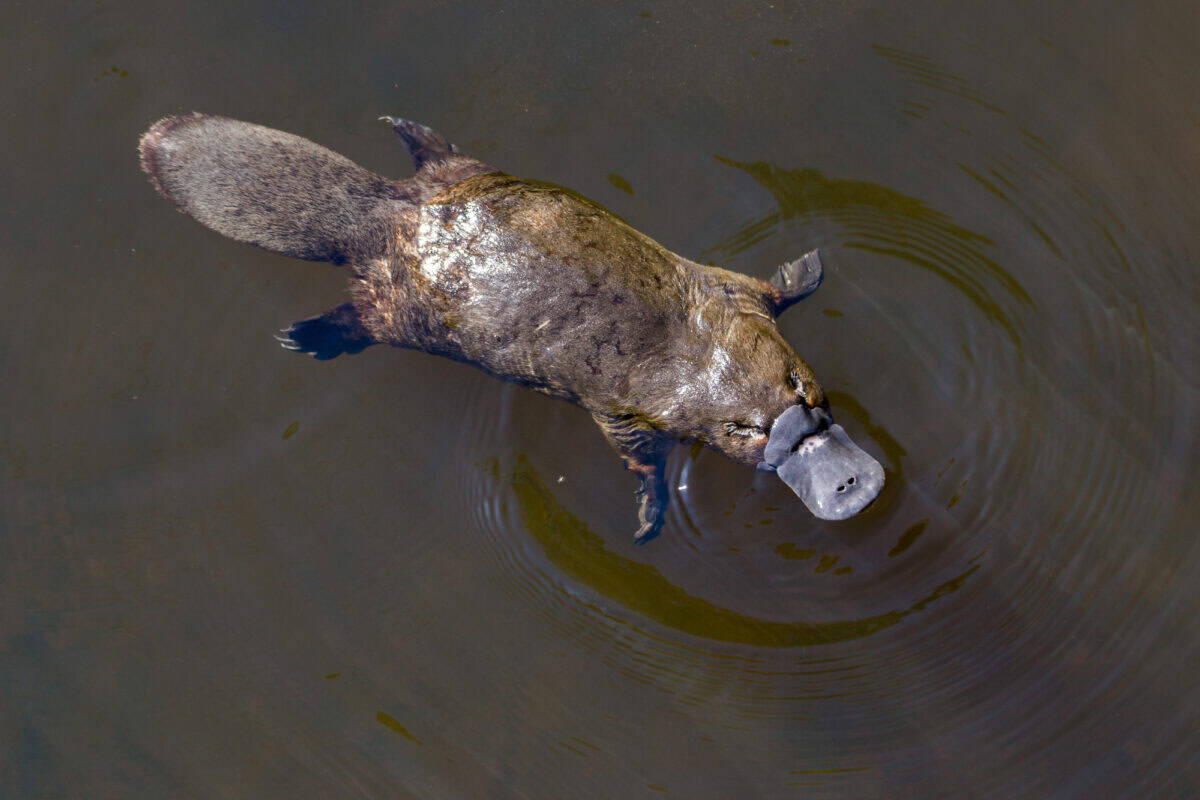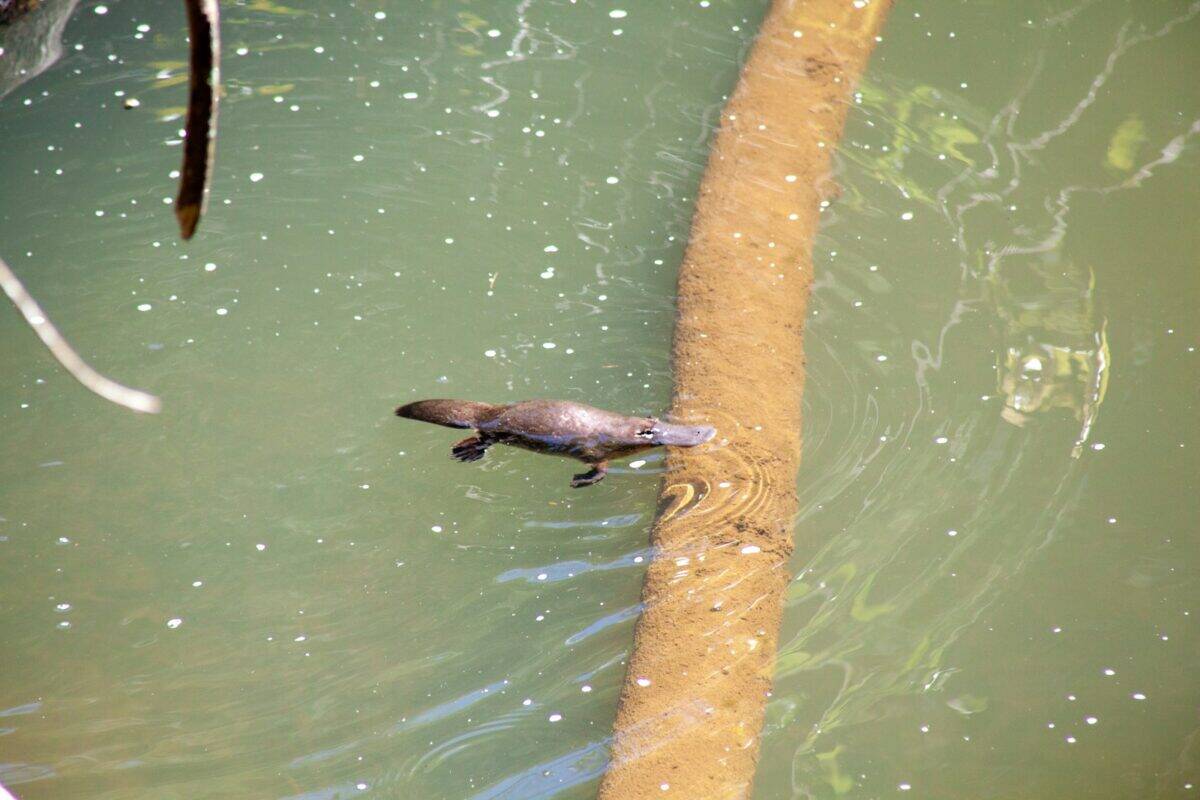In a world where venomous creatures typically have scales, stingers, or eight legs, one unassuming mammal stands out as nature’s most poisonous furry anomaly. The platypus – with its duck-like bill, beaver-like tail, and otter-like body – may seem like a creature cobbled together from spare parts, but its peculiar appearance masks an even more remarkable feature: it’s the world’s most venomous mammal. This extraordinary distinction belongs to the male platypus, which carries powerful venom in spurs on its hind legs. Let’s dive into the fascinating world of this extraordinary creature and explore what makes it such a unique and formidable member of the animal kingdom.
The Platypus: An Evolutionary Curiosity

The platypus (Ornithorhynchus anatinus) is one of nature’s most peculiar creations. Native to eastern Australia, this semi-aquatic mammal belongs to a primitive group called monotremes – mammals that lay eggs rather than giving birth to live young. Alongside echidnas, platypuses are the only surviving monotremes on Earth, representing a fascinating evolutionary branch that diverged from other mammals around 166 million years ago.
Their unusual combination of reptilian and mammalian characteristics – including their egg-laying ability, duck-like bill, beaver-like tail, and otter-like body – made early European naturalists so skeptical that they initially believed the platypus specimens brought to England were elaborate hoaxes created by stitching different animals together.
Venom Delivery System: The Deadly Ankle Spurs

The platypus’s venomous capability is exclusive to adult males, who possess a pair of sharp, hollow spurs on their hind ankles connected to venom-secreting crural glands. Each spur measures about 15mm (0.6 inches) in length and can be erected when the animal feels threatened. During confrontations, particularly during the breeding season, male platypuses can drive these spurs into opponents with considerable force, injecting a complex cocktail of toxins. The venom delivery system is remarkably well-developed, indicating its evolutionary importance to male platypuses. Interestingly, juvenile males also have these spurs, but they’re covered by a protective sheath that falls away as they mature, revealing the functional spur underneath.
Platypus Venom: A Complex Mixture

Platypus venom is extraordinarily complex, containing over 80 different toxins across 13 different structural classes. Research has identified several unique proteins not found in any other venomous creature, including defensin-like peptides (OvDLPs), C-type natriuretic peptides (OvCNPs), and nerve growth factor (OvNGF).
What makes this venom particularly fascinating to scientists is that it evolved completely independently from the venom of reptiles and other creatures, representing a remarkable case of convergent evolution. The venom’s complexity suggests it serves multiple purposes beyond simple defense, possibly playing roles in competition between males during breeding season or even in paralyzing prey, though the latter function remains speculative.
Effects on Humans: Excruciating Pain

While not lethal to humans, a platypus envenomation is described as excruciatingly painful and potentially debilitating. Victims report immediate, intense pain that can last for days or even weeks, with the pain so severe that it doesn’t respond to morphine or other powerful analgesics. The venom causes rapid swelling at the wound site, hyperalgesia (heightened sensitivity to pain), and in some cases, whole-limb edema.
One particularly notable component of the venom targets the body’s pain receptors directly, essentially hijacking the nervous system to maximize suffering. There are accounts of victims experiencing pain so severe they begged doctors to amputate the affected limb. Recovery can take months, with some reporting lingering hypersensitivity in the affected area for years after being spurred.
Evolutionary Purpose: Why Develop Venom?

Scientists believe the platypus’s venom system evolved primarily for male-to-male competition rather than predator defense. This theory is supported by several observations: the venom production dramatically increases during breeding season, only males possess functional spurs, and the venom appears specifically designed to cause pain rather than death.
During mating season, males compete fiercely for territory and access to females, using their venomous spurs against rivals. The excruciating pain caused by the venom would certainly discourage competitors from continuing their challenge. This makes the platypus’s venom different from many other venomous animals, whose toxins evolved primarily to immobilize prey or as a defensive mechanism against predators.
The Solenodon: Another Venomous Mammal Contender

While the platypus claims the title of most venomous mammal, it’s not the only mammal with venom capabilities. The solenodon, a rare insectivore found in Cuba and Hispaniola, also produces venom. These shrew-like creatures deliver their toxins through modified salivary glands and grooved teeth in their lower jaw.
Unlike platypuses, both male and female solenodons produce venom, which they use primarily for hunting rather than defense or competition. Their venom causes respiratory difficulties, convulsions, and paralysis in small prey animals. However, solenodon venom is significantly less potent than platypus venom and causes far less severe reactions in humans. Still, these curious creatures represent one of the few examples of true venom production in mammals.
Other Venomous Mammals: A Rare Trait

The mammalian world has remarkably few venomous species compared to reptiles, amphibians, fish, and invertebrates. Besides the platypus and solenodon, certain shrews have been found to possess toxic saliva that can paralyze small prey, though whether this truly constitutes venom remains debated among scientists.
The slow loris, a small nocturnal primate from Southeast Asia, produces a toxin from glands on its elbows that, when mixed with saliva, creates a powerful venom capable of causing anaphylactic shock in humans. Male musk deer possess scent glands that produce compounds toxic if ingested, though these aren’t true venoms. The rarity of venom among mammals remains something of an evolutionary puzzle, especially considering how effective this adaptation has proven for other animal groups.
Platypus Venom in Medical Research

The unique properties of platypus venom have attracted significant scientific interest, particularly in pain management research. Scientists have identified compounds in the venom that could potentially lead to novel painkillers. One protein, dubbed “platypus venom peptide,” has shown promise in treating certain types of chronic pain by targeting specific pain receptors.
Additionally, the venom contains defensin-like peptides with powerful antibacterial properties that could inspire new antibiotics. The venom’s ability to cause long-lasting hyperalgesia (increased sensitivity to pain) also makes it valuable for understanding pain pathways and developing better analgesics. As with many natural toxins, platypus venom may ultimately benefit human medicine by revealing new therapeutic approaches that we might never have discovered through conventional pharmaceutical research.
Conservation Status and Threats

The platypus is currently listed as “Near Threatened” on the IUCN Red List, with populations declining across much of its range. These unique creatures face numerous threats, including habitat destruction from land clearing and dam construction, entanglement in fishing gear, predation by introduced species like foxes and cats, and increasingly, climate change.
Extended droughts in Australia have dried up waterways and reduced suitable habitat, while intense bushfires destroy riparian vegetation essential for platypus survival. Their specialized lifestyle and relatively slow reproduction rate (females typically produce 1-2 eggs annually) make platypuses particularly vulnerable to environmental changes. Considering their evolutionary uniqueness and scientific importance, conservation efforts for platypuses have taken on new urgency in recent years.
Fascinating Platypus Adaptations Beyond Venom

While their venom gets much attention, platypuses possess numerous other remarkable adaptations. Their bills contain thousands of electroreceptors that detect the electrical fields generated by prey animals’ muscle contractions, allowing them to hunt effectively in murky water with their eyes, ears, and nostrils closed. This electroreception ability is among the most sensitive in the animal kingdom.
Platypuses also have dense, waterproof fur that traps an insulating layer of air against their skin, keeping them warm in cold water. Their flat tails store fat reserves for lean times, and their webbed feet can be adjusted for efficient swimming or digging on land. Female platypuses lack nipples; instead, milk is secreted through pores in their skin for their young to lap up. These adaptations make the platypus one of nature’s most specialized and successful evolutionary experiments.
Platypus Reproduction and Life Cycle

The platypus’s reproductive biology is as unusual as its other features. Despite being mammals, female platypuses lay leathery eggs similar to those of reptiles, typically producing 1-3 eggs after a gestation period of about 21 days. The mother incubates these eggs for about 10 days by curling around them in a specially constructed burrow.
When hatched, the bean-sized young (called puggles) are altricial—blind, hairless, and completely dependent. They lap milk that oozes from specialized mammary glands onto the mother’s fur, as platypuses lack nipples. Young platypuses remain in the burrow for about 3-4 months before venturing out, becoming independent at around 4-5 months old. Males provide no parental care and, in fact, must be kept away from the young due to their venomous spurs. Platypuses typically live 10-15 years in the wild, with some individuals surviving up to 20 years.
Conclusion: Nature’s Venomous Oddity

The platypus stands as a testament to evolution’s creativity and the extraordinary diversity of life on Earth. As the world’s most venomous mammal, it defies our expectations about what mammals can be and do, continuing to fascinate scientists and the public alike more than two centuries after its discovery.
The unique composition of platypus venom not only serves as a powerful tool for male competition but also holds potential keys to developing new medications that could alleviate human suffering. As we work to protect these remarkable creatures from growing environmental threats, we’re also preserving one of nature’s most unusual evolutionary experiments—a reminder that the natural world contains wonders we’re still only beginning to understand.
- This Fish Has the Most Teeth in the Ocean—And Uses Them Well - August 9, 2025
- How Wolves Use Group Howls to Reunite With Pups - August 9, 2025
- 12 Dog Breeds That Form the Deepest Emotional Bonds with Their Owners - August 9, 2025

